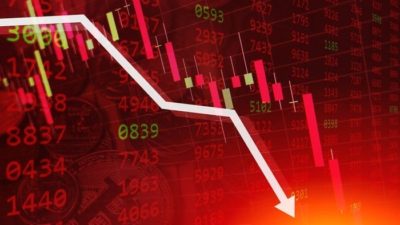This article was originally published on Fool.com. All figures quoted in US dollars unless otherwise stated.
A big hurdle to launching your investment plan is figuring out where to start. You might have a few high-profile stocks in mind, like Apple or Walmart. But concentrating all your money in one or two stocks doesn't feel like a good idea.
Fortunately, a quality ETF or mutual fund can give you the best of both worlds. The right funds hold those high-profile stocks you like, plus hundreds of other positions too. You'll get the long-term growth you want, along with diversification -- all rolled up in each share.
Here are three types of fund that can anchor your investment strategy and deliver long-term returns. Over 20 years or more, you can expect these funds to grow about 7% annually on average, net of inflation.
1. S&P 500 index ETF
The S&P 500 fund is a popular choice for new investors, and for good reason. The S&P 500 index includes 500 of the largest, most successful public companies in the U.S. In terms of value, the index accounts for roughly 80% of all stocks -- which is why the index is often used as a gauge for the overall market.
S&P 500 ETFs mimic the index's performance. There are many S&P 500 funds out there, but the best choices are those with low expense ratios and minimal tracking errors.
- The expense ratio is the percentage of your investment that pays for the fund's operating costs.
- Tracking error is the difference between the fund's performance and the index's performance. There is always a slight discrepancy here. Funds have expenses and timing issues, while indexes do not. A fund's expense ratio typically accounts for most of the tracking error.
The table below shows three popular S&P 500 index funds, along with their expense ratios, size, and 10-year growth performance.
| Fund Name | Expense Ratio | Net Assets | 10-year Average Annual Growth |
|---|---|---|---|
| Vanguard S&P 500 ETF (NYSEMKT: VOO) | 0.03% | $780 billion | 13.76% |
| SPDR S&P 500 ETF (NYSEMKT: SPY) | 0.09% | $373 billion | 13.65% |
| iShares Core S&P 500 ETF (NYSEMKT: IVV) | 0.03% | $309 billion | 13.75% |
Table data source: Vanguard, SPDR, iShares
2. Total market fund
Another solid option is a total market fund, which replicates the performance of -- you guessed it -- the entire stock market.
Total market funds vary more in their holdings vs. S&P 500 funds, for a couple reasons. First, total market funds can track different indexes, such as the Wilshire 5000 or the Russell 3000. These funds can also either replicate their entire benchmark index or take a sampling approach.
Sampling means the fund holds a smaller representative group of stocks that mirrors an index's performance. The advantage is that sampling can be more cost-efficient vs. owning every stock in a large index. As with S&P 500 ETFs, low expenses are better.
Even a total market fund that samples will provide diversification across thousands of stocks, including small, medium, and large companies.
See the table below for three total market funds with low expense ratios.
| Fund Name | Expense Ratio | Total Net Assets | 10-year Average Annual Growth |
|---|---|---|---|
| Vanguard Total Stock Market Index Fund (NYSEMKT: VTI) | 0.03% | $1.2 trillion | 13.42% |
| iShares Core S&P Total U.S. Stock Market ETF (NYSEMKT: ITOT) | 0.03% | $43 billion | 12.50% |
| Schwab U.S. Broad Market ETF (NYSEMKT: SCHB) | 0.03% | $21 billion | 13.39% |
Table data source: Vanguard, Schwab, Fidelity
3. Quality-screened dividend fund
If you don't like the idea of waiting decades to cash in on your investment returns, a dividend fund might be a better choice. To be clear, you'll get rich faster if you reinvest those dividends. But the quarterly payments, even if they are reinvested, can feel more tangible than unrealized gains. And tangible returns are comforting -- particularly in bear markets.
Quality-screened dividend funds invest in dividend-paying companies that meet thresholds for stability and reliability. The fund might track a quality dividend index, like the Northern Trust Quality Dividend Index. Or the fund may have its own screening methodology that looks at dividend payout ratio and dividend consistency, among other things.
The table below shows three screened dividend funds that may have roles to play in your portfolio.
| Fund Name | Expense Ratio | Total Net Assets | Dividend Yield |
|---|---|---|---|
| Schwab U.S. Dividend Equity ETF (NYSEMKT: SCHD)
|
0.06% | $38 billion | 3.3% |
| FlexShares Quality Dividend Index Fund (NYSEMKT: QDF) | 0.38% | $1.6 billion | 2.3% |
| Franklin U.S. Low Volatility High Dividend Index ETF (NASDAQ: LVHD)
|
0.27% | $686 million | 3.4% |
Table data source: Schwab, FlexShares, Franklin Templeton
Getting rich with broad-based funds
These funds won't carry you to overnight riches, but you can double your invested capital about every 10 years. Repeat that process four times over, and you'll be well richer than when you started.
This article was originally published on Fool.com. All figures quoted in US dollars unless otherwise stated.









